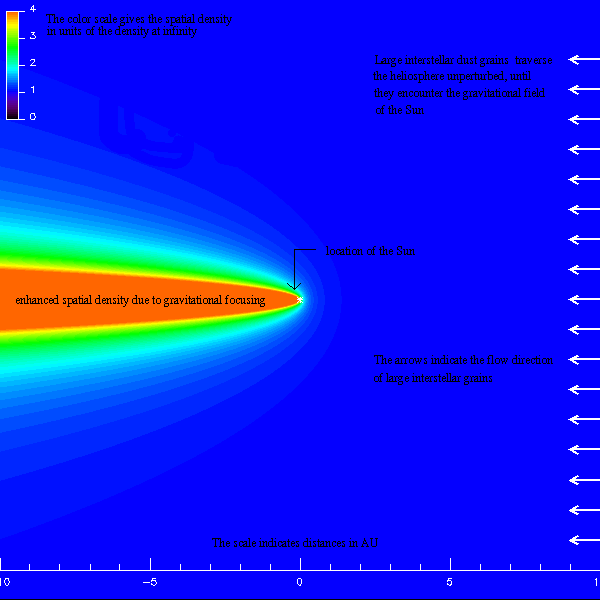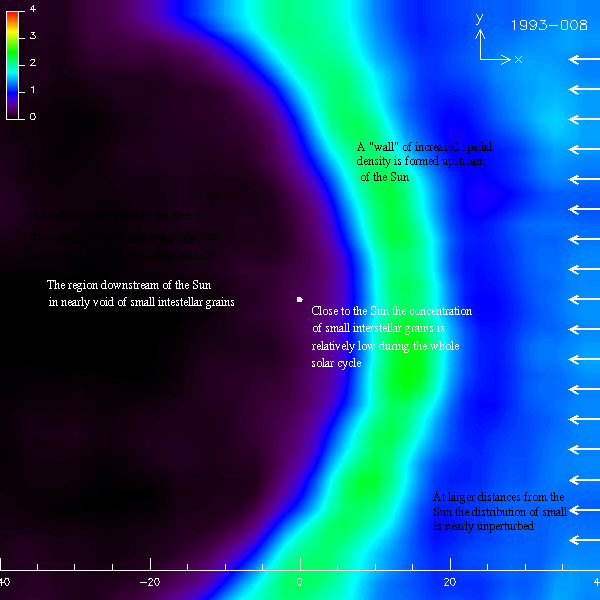| Solar wind plasma expands
more-or-less freely until it meets the local interstellar medium (LISM).
On the simplest level, the interaction is stagnation point flow
between two fluids flowing towards each other. In the example shown here,
there is a spherical source (the Sun) of outflow and a planar flow from
the right. Both flows come to a halt (in the solar frame of reference)
at the stagnation point. As the flows approach the stagnation
point, they are turned. The LISM flow dominates so it forces the solar
wind to turn and eventually flow in the same direction as the LISM flow,
down the heliotail. The surface that divides the two flows is the
heliopause.
Solar wind flow is initially supersonic. Therefore, it
will generally have to be slowed before it can be turned to flow down the
heliotail. Solar wind flow normally will slow abruptly at the termination
shock, with supersonic flow inside the termination shock and
subsonic flow outside the termination shock - in the inner heliosheath.
The termination shock is thought to be at ~100 AU.
The direction of solar north (solar rotation) is indicated
here by v. However, the ideal situation shown
here is axisymmetric about the axis in the LISM upstream direction.
As solar wind plasma passes through the termination
shock it is heated back to coronal temperatures of ~one million degrees.
It is also compressed by a factor of <~ four, although the density is
so small at 100 AU that the compression still leaves a very sparse plasma
of less than one particle per cubic centimeter (0.1 - 0.3 per cubic
centimeter).
The flow speed just inside the termination shock
is 400-750 km/s and 100-200 km/s just beyond the termination shock.
This decreases as the flow is turned and the flow speed in heliotail
is ~25 km/s.
If the LISM flow speed is faster than the sound and Alfven
speeds then there will also be a bow shock out in front of the stagnation
point. In this case, there will also be an outer heliosheath between
the heliopause and the bow shock. |


